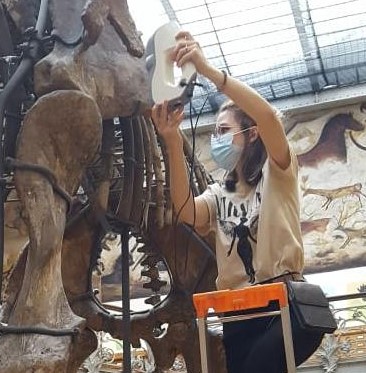Thématique
"Today, the Proboscidean order is represented by only three living species, although more than 160 extinct species have been identified, originating from all continents except Australia and Antarctica, since the late Paleocene. Early proboscideans were relatively small, but their size increased from the mid-Miocene onwards, reaching medium to large sizes followed later by massive graviportal forms.
This PhD project aims to investigate the effects of graviportality on long bones in modern and extinct Proboscidae, and to compare them with those that occur within other mammalian graviportal taxa. We will do so by studying both the outer morphology (using 3D morphometric geometrics) and the microanatomy of the long bones of extant species; and then extend our analyses to the fossil record of Proboscidea.
Comparisons with other massive mammals, such as modern Rhinocerotidae and Hippopotamidae species will allow a better understanding of the evolution and adaptation of the bone in response to extreme body weight, since different modes of adaptation can occur within the same lineage.
This PhD project should thus provide a better understanding of the limb bone adaptations to an evolutionary shift toward high body-mass in Proboscideans, both in their outer and inner microanatomy, and bring new information on the different ways mammalian taxa have adapted to heavy weight."




